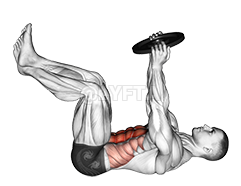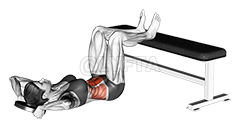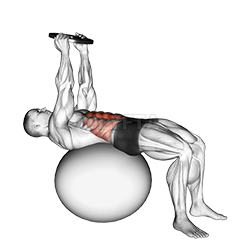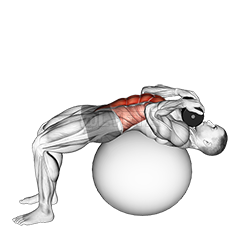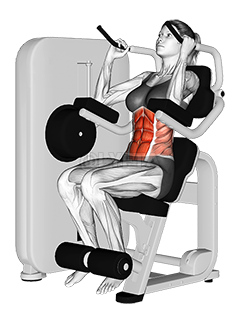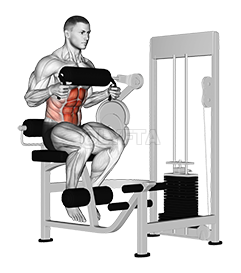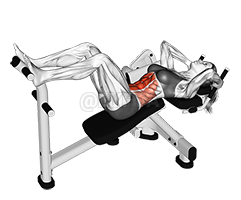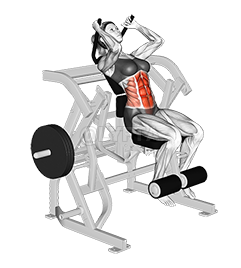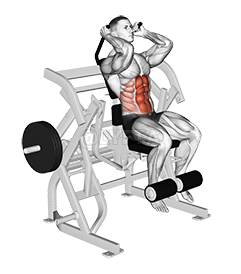
Weighted Crunch
Exercise Profile
Related Exercises:
Introduction to the Weighted Crunch
The Weighted Crunch is a highly effective core-strengthening exercise that targets the abdominal muscles, enhancing overall core stability and improving posture. This exercise is suitable for both beginners and advanced fitness enthusiasts as it can be easily modified to match individual strength levels. People might opt for Weighted Crunches as they offer a more challenging variation to regular crunches, helping to accelerate muscle growth and definition in the abs.
Performing the: A Step-by-Step Tutorial Weighted Crunch
- Bend your knees and plant your feet flat on the ground, hip-width apart.
- Slowly curl your upper body, lifting your shoulders and upper back off the floor, while keeping your lower back pressed to the floor.
- Hold for a second at the top of the movement, squeezing your abdominal muscles.
- Gradually lower yourself back down to the starting position, making sure to keep control and not let your body just fall back to the floor.
Tips for Performing Weighted Crunch
- Controlled Movement: Avoid the temptation to rush through the movement. It's not about how many crunches you can do, but how effectively you can do them. A slow, controlled movement will engage your muscles more effectively and reduce the risk of injury.
- Weight Placement: Hold the weight close to your chest. Holding it further away can put unnecessary strain on your arms and neck, detracting from the focus on your abs.
- Breathing: Don't hold your breath during the exercise. Exhale as you crunch up and inhale as you lower back down. This will help maintain blood pressure and oxygenate your muscles
Weighted Crunch FAQs
Can beginners do the Weighted Crunch?
Yes, beginners can do the Weighted Crunch exercise. However, it's important to start with a light weight to ensure proper form and prevent injury. As strength and endurance improve, the weight can be gradually increased. It's also advisable for beginners to seek guidance from a fitness professional to ensure they are performing the exercise correctly.
What are common variations of the Weighted Crunch?
- The Medicine Ball Weighted Crunch involves holding a medicine ball in your hands, extending it above your chest as you crunch.
- The Cable Weighted Crunch is a variation that uses a cable machine, pulling the weight down as you crunch.
- The Plate Weighted Crunch involves holding a weight plate behind your head while performing the crunch.
- The Resistance Band Weighted Crunch is a variation where you use a resistance band anchored behind you, creating tension as you crunch.
What are good complementing exercises for the Weighted Crunch?
- Russian Twists: Russian twists work the obliques, the same muscle group targeted by Weighted Crunches, but in a rotational movement, which can help to improve core stability and balance, as well as define the waistline.
- Bicycle Crunches: Bicycle crunches are a great complement to Weighted Crunches because they not only target the rectus abdominis (the 'six-pack' muscle), but also engage the obliques and hip flexors, providing a comprehensive abdominal workout.
Related keywords for Weighted Crunch
- Weighted Crunch workout
- Waist-targeting exercises
- Strengthening waist with Weighted Crunch
- Weighted exercises for abs
- Core strengthening with Weighted Crunch
- Weighted Crunch for waist reduction
- Waist toning exercises
- Weighted Crunch abdominal workout
- Weighted Crunch for waistline
- Intense waist workout with Weighted Crunch.
